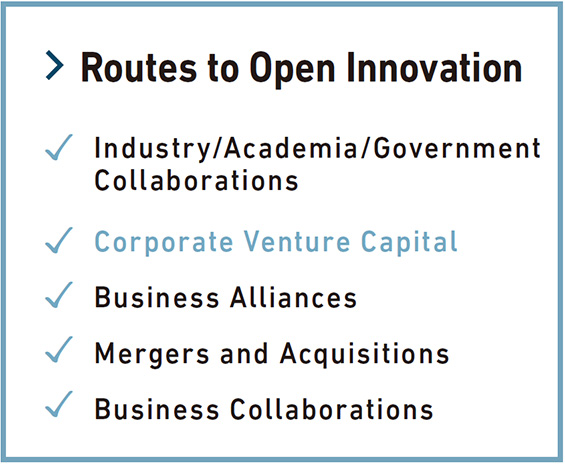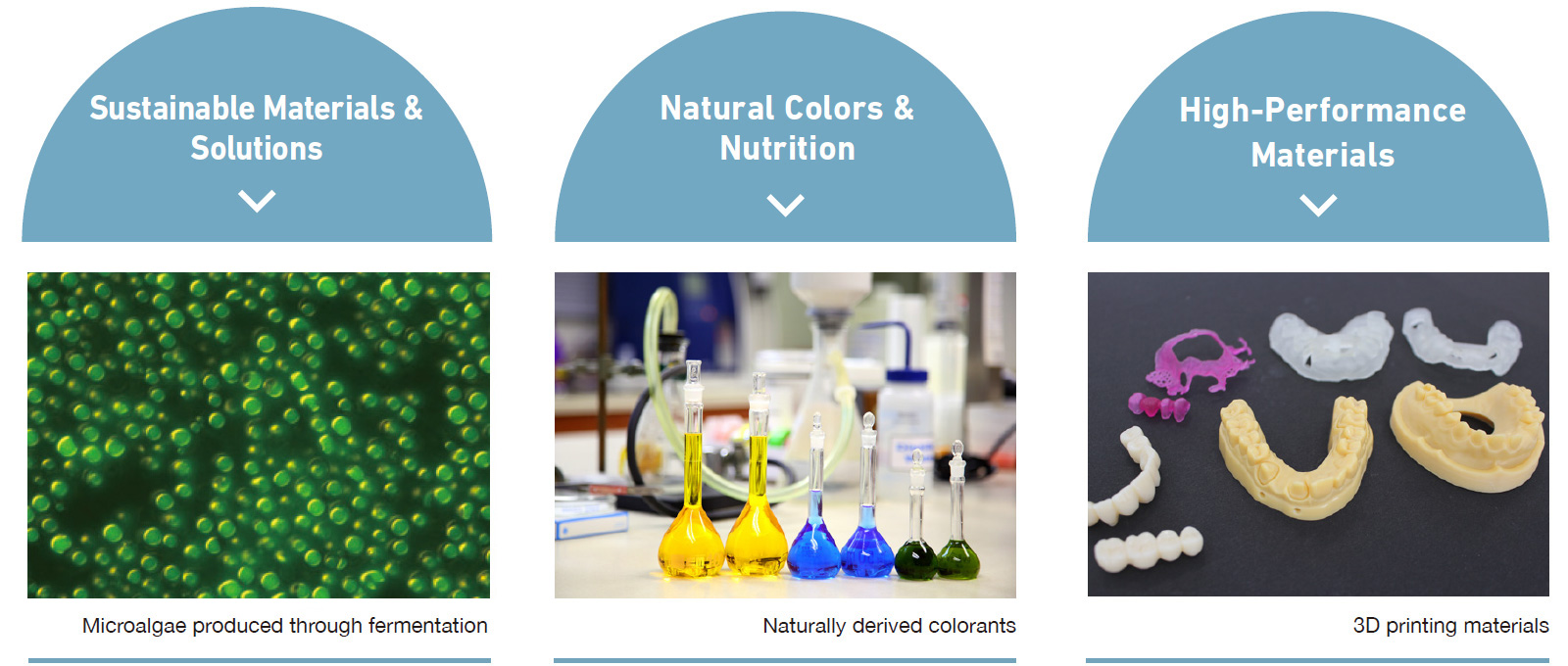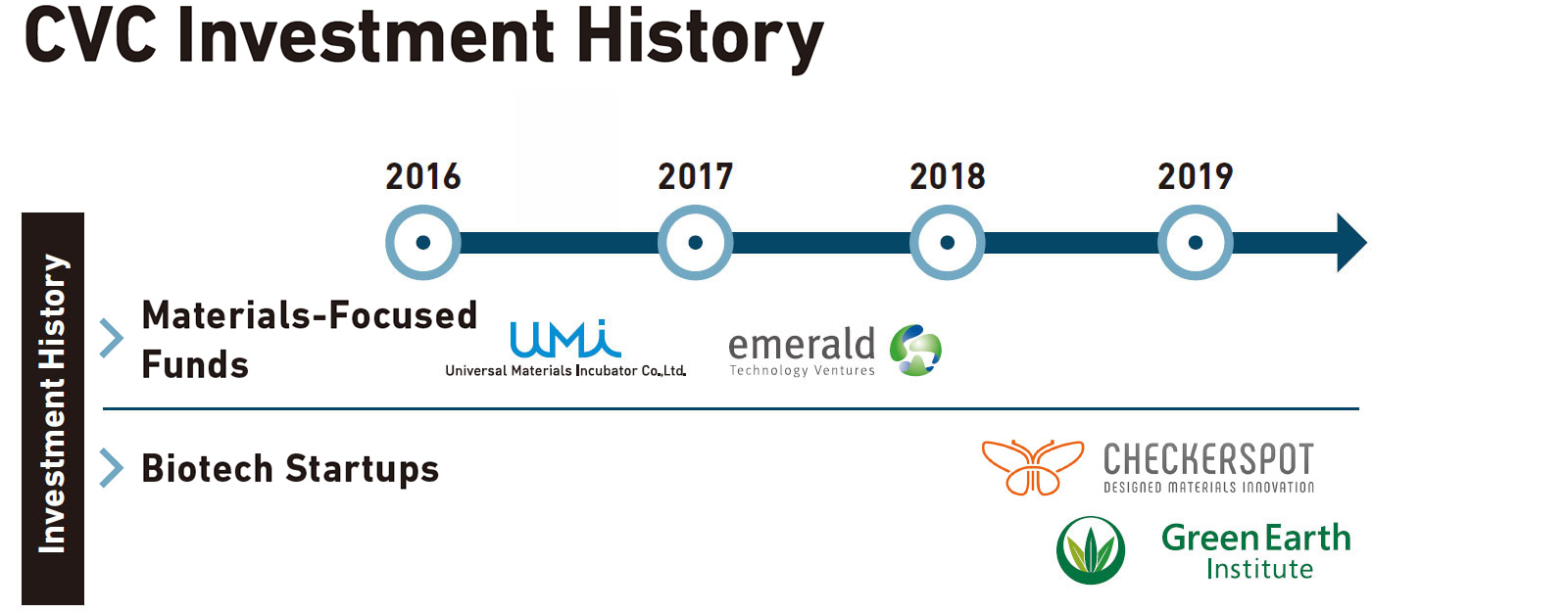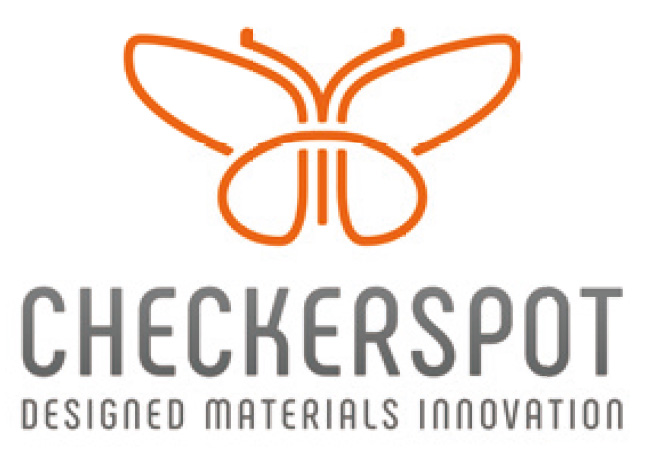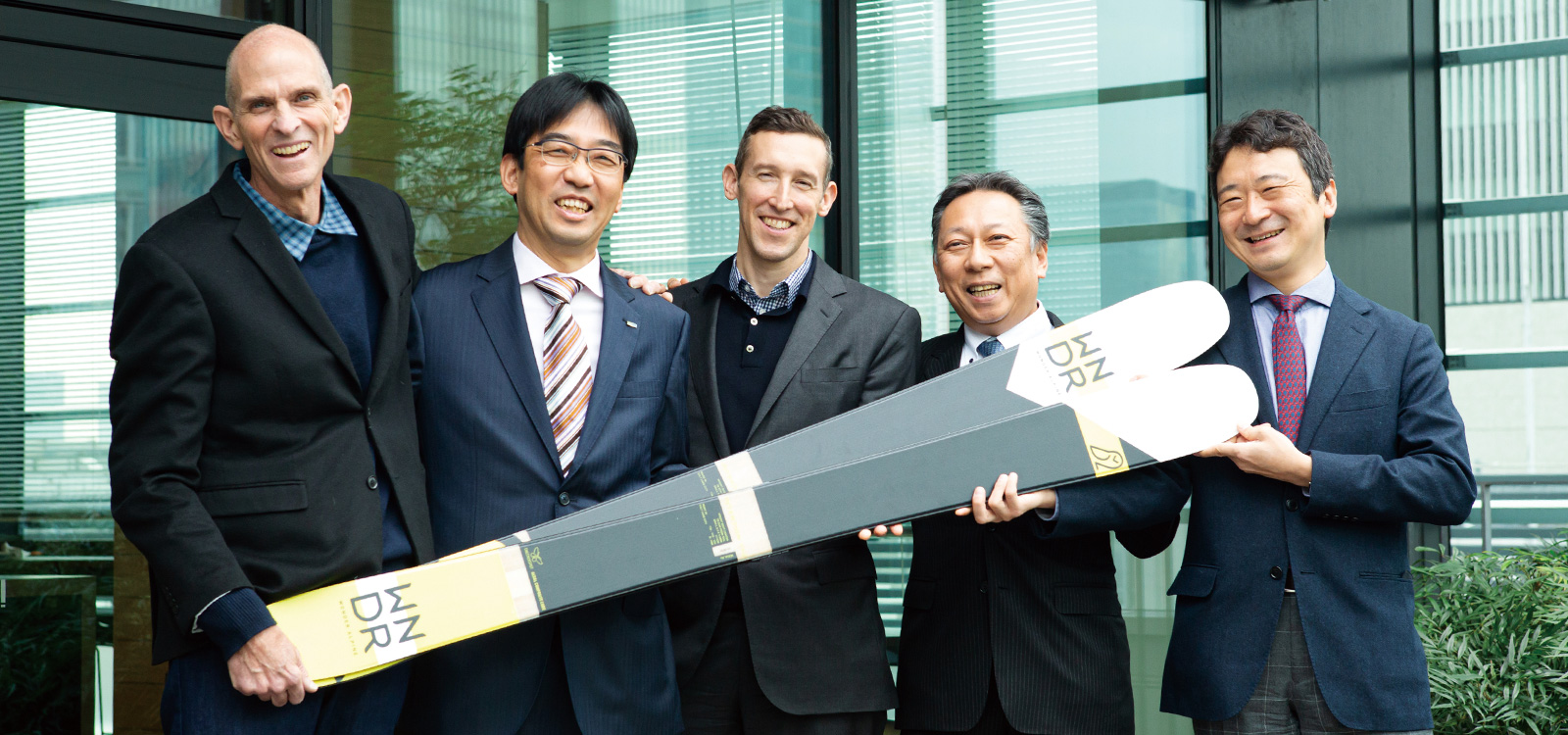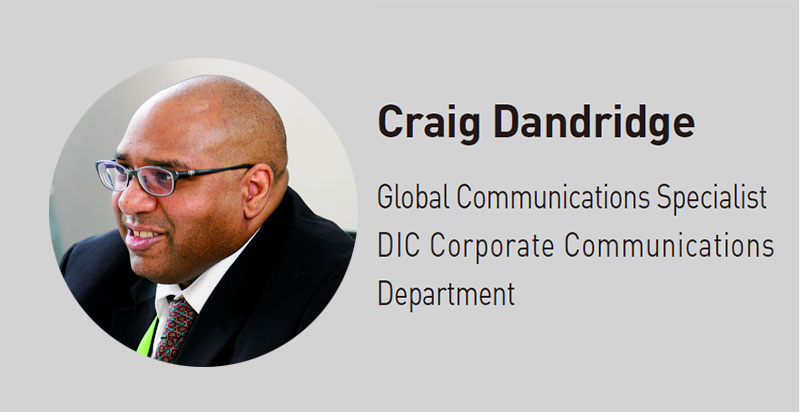DIC Uses Corporate Venture Capital to Leverage Biotech Startup Checkerspot Inc.’s Sustainable Microalgae Materials Innovation Platform
- Sustainability

Like other global companies, DIC is leveraging corporate venture capital (CVC) to fuel greater innovation. In 2016, DIC established a CVC unit within the then New Business Planning Department. DIC now manages CVC operations in the New Business Planning Department within New Business Management Headquarters. Based on DIC sustainability goals, this unit searches the globe for startups boasting unique technologies, compelling business models, or disruptive innovations that may contribute to society and the longevity of the DIC Group.
CVC is the practice of directly investing corporate funds in innovative startups through joint venture agreements or equity stake acquisitions that provide a startup with management or marketing expertise, strategic direction, or even lines of credit. In addition to exploring new markets, DIC is using CVC to make the DIC Group more robust against macroeconomic factors, expand existing businesses, and improve market positions.
In 2003, American organizational theorist, Henry Chesbrough, coined the term open innovation, whereby business organizations combine internal and external ideas, or internal and external paths to market, to advance new technology development. CVC provides investing companies with competitive advantages through access to new, innovative companies and technological knowhow.
DIC hopes to accelerate new business creation through advanced technology and knowhow. Routes to open innovation include industry/academia/government collaborations, business alliances, mergers and acquisitions, horizontal or vertical collaborations, as well as discovering promising startups with unique technologies or new technologies indispensable to long-term growth.
Venture Capital Differences
Venture capital (VC) is a form of private equity or financing t hat investors provide to startups companies or small businesses believed to have long-term growth potential. Investors are often wealthy investors, investment banks, and any other fina ncial institutions. Unlike VC, CVC strives to achieve goals both strategically and financially. While financially driven CVC invests in new companies for leverage, strategically driven CVC seeks to increase sales and profits via deals with startups using new technologies, new market entry, acquisition target acquisition, and access to new resources.
New Pillar Creation is a key strategy within the DIC111 Medium-Term Management Plan, mapping the DIC Group growth path through 2021. Here CVC plays a central role in cultivating new businesses leveraging external resources. The DIC Group is targeting four principal business segments: Electronics; Automotive; Next-Generation Packaging; and Healthcare. The Electronics segment is focused on next-generation displays. The Automotive segment is focused on next-generation battery materials. The Next-Generation Packaging segment is focused on sustainable packaging materials. The Healthcare segment is focused on functional foods.
DIC is using CVC to invest in three principal sectors: Sustainable Materials and Solutions; Natural Colors and Nutrition; and High-Performance Materials. Sustainable Materials and Solutions targets include recycling systems, naturally derived materials,biodegradable materials, packaging solutions, and energy and resource conservation. Natural Colors and Nutrition targets include natural colorants, functional foods, cosmetics and cosmetic materials, and algae cultivation technologies. High-Performance Materials targets include engineering plastics, carbon fiber–reinforced plastics (CFRP), liquid crystal (LC) materials, functional inks and adhesives, additives and coatings, and 3D printing materials.
Established in 2016, the DIC CVC unit is staffed by two members based in the United States and three members based in Japan (one dedicated, one shared, and one support person). The unit focuses its search for investment candidates in North America, Europe, Japan, and Israel.
In making strategic investments to foster new businesses or creating new businesses through collaborations, DIC chiefly targets early stage startups with minority investments that do not increase the shareholding ratio. In three years, DIC has invested directly in two biotech startups and two materials-focused funds in the materials and chemicals industries.
Universal Materials Incubator Co., Ltd. (UMI)
Established in October 2015, UMI seeks to strengthen Japan’s technological capabilities by fostering outstanding material and chemical companies and cultivating a globally competitive industry structure that serve as the foundation for future industry and providing a platform for creating new business in these industries. Beyond DIC, UMI is collaborating with other major Japanese chemical companies, including Asahi Glass, Sumitomo Chemical, and Sekisui Chemical.
Emerald Technology Ventures
Founded in 2000, Emerald Technology Ventures is a global investment firm in energy, water, advanced materials, and industrial IT. Managing one of the largest clean technology venture portfolios in Europe and North America, Emerald has managed over USD 660 million in assets from offices in Zurich, Switzerland and Toronto, Canada. Emerald shares insights on some 1,300 startups a year with DIC. In turn, DIC uses Goldfire Cognitive Search to share this information internally. This leads to discussions for joint research and creation of new ideas.
Checkerspot Inc.
Checkerspot seeks to mass-produce substances existing in low concentrations in nature using fermentation.
DIC initially invested in Checkerspot in April 2018. In June 2018, the two companies signed a joint development agreement (JDA) to create novel advanced performance materials, engaging in a range of collaborative efforts. On January 24, 2020, Checkerspot CEO, Charles Dimmler, and CSO, Scott Franklin visited Tokyo, presenting Intention 110 backcountry skis made from algae-derived polyol, launched in October 2019 under Checkerspot’s WNDR Alpine brand, to New Business Development Headquarters general manager, Kiyofumi Takano.
The DIC-Checkerspot partnership is focused on commercializing new and improved products and relevant manufacturing processes areas, including adhesives, coatings, printing inks, and lubricants.
Green Earth Institute (GEI)
Founded in September 2011, GEI is focused on producing carbon neutral biofuels and green chemicals from non-food biomass in place of foodor feed crops. Using technology originally invented by the Research Institute of Innovative Technology for the Earth (RITE), GEI developed a more efficient low-cost green product production from non-food biomass, replacing conventional fermentation technologies. A referral from UMI led to direct investment by DIC and joint research with DIC.
In 2016, DIC Corporation directly invested in Checkerspot, Inc., a high-performance materials company designing materials at a molecular level. The Berkeley, California startup is making waves pioneering molecular technology based on micro-algae (as a direct replacement for petroleum-based materials) to produce materials for more sustainable high-performance products.
Building on advances in predictive molecular biology and chemistry, Checkerspot is creating revolutionary materials with improved physical properties. The company is strategically focusing its initial end-use product applications on outdoor athletes and enthusiasts—a population segment with an extremely high affinity for ecology, the environment, and sustainability.
From product planning that includes end-of-product-life considerations to its use of social media and influencers to track consumer reaction, Checkerspot’s business model is revolutionary on many fronts. Notably, Checkerspot is presenting previously unavailable technologies and materials to innovative product designers, who then use these materials to create next generation high-performance sustainable products.
The young company has already teamed up with 4FRNT Skis founder, Matt Sterbenz—a legend in the world of backcountry skiing—to launch its WNDR Alpine outdoor equipment brand. Sterbenz and his Checkerspot team are experimenting with new bio-based materials to create more sustainable, high-performance skis and other products for outdoor athletes and enthusiasts.
During a visit to the DIC head office in Nihonbashi, Tokyo, Checkerspot co-founders Charles Dimmler and Scott Franklin sat down to chat about the company, their vision, and the importance of sustainability with the DIC Corporate Communications Department’s Craig Dandridge.
Checkerspot Inc. Origin Story
Charles Dimmler and Scott Franklin co-founded Checkerspot in June 2016. CEO Dimmler has over a decade of experience in the biotech business with notable successes in the areas of new product development and marketing, as well as M&A and financing. The other half of this dynamic duo, Chief Scientific Officer (CSO) Franklin, has several decades of experience innovating with micro-algae in research and commercial settings.
Scott and Charles saw very interesting opportunities for the naturally existing novel oils (triglycerides) the earth produces in plants that have heretofore remained unexploited merely because the plants in question don’t grow in arable regions. From a material science perspective, it is very difficult to economically access naturally existing novel oils at scale. However, by plugging plant genes into a microbial expression, industrial biotechnology unlocks access to those genes through the process of fermentation.
Charles and Scott knew from past experiences that technologically this concept was not merely a hypothesis. The concept was substantive, and they knew they could make it a reality. What was required was focus and a method to bring to life this possibility through the physicality of product. Charles says, “Our strategy is to quickly get to product examples that educate and illuminate the public and other stakeholders.”
The core Checkerspot strategy has been to quickly get to product examples that showcase performance materials in a way that helps to illuminate and educate consumers and stakeholders around what is possible. They think it’s vital to help meet the global needs for more high-performance materials and ingredients.
Charles and Scott view WNDR Alpine as an extension of the Checkerspot laboratory, providing the company with vital consumer engagement. Charles adds, “Frankly, it’s a whole lot of fun. It’s been a great way to showcase what is possible and tell the story in a compelling way.”
Sustainability as A Core Brand Value
While Checkerspot is focused how the company sources materials and ingredients, sustainability is something very personal for both Scott and Charles. “That’s why we named the company Checkerspot, after a butterfly living in the Sierra Nevada mountain range that is negatively impacted by climate change. A core value is sustainability and doing things in a different way, but also along the way being able to deliver high-performance products.”
Checkerspot is focused on three aspects of sustainability specifically. First, how materials are sourced, and how materials come to market. Second, how materials are deployed. (A good example of this aspect is safety. Some materials—most notably fluorinated chemistry and textile finishers—are toxic. So, the safety of materials and ingredients are a key aspect of sustainability.
Finally, Checkerspot is concerned with what happens to the products at the end of their useful life. Will the materials go to landfill or can the materials be repurposed? “These are the three facets that we spend a lot of time thinking about,” says Charles.
“It is very clear looking at the history of materials commercialization, and proliferation of consumer brands, and the amount of consumption that, especially in the Western world, has experienced that the model that we developed and inherited in the twentieth century is not something that we can continue in the twenty-first century.”
Performance Gear as A Matter of Life and Death
Checkerspot’s initial consumer brand, WNDR Alpine, is an outdoor brand. The target consumer is the alpinist, the mountaineer. Checkerspot chose this market segment for the commonly shared traits it shares with the Checkerspot brand.
First, alpinists commonly share the desire to explore, to push the boundaries of what is possible. “I think this notion of tapping into human potential is very important to the brand architecture,” says Charles.
Secondly, alpinist commonly share a deep love, if not an outright passion, for the outdoors and mother nature. Finally, alpinists often place themselves in precarious situations, where the performance of their gear can mean life or death.
The Checkerspot brand encompasses this constellation of factors, starting with the outdoors and the love of mother nature; the desire to push oneself, to explore to bounds of human potential, and placing oneself in situations where the performance of materials and products really matter.
“There is a lot of parallelism between these dimensions and what we are doing from an innovation perspective at Checkerspot,” says Charles. “We are pushing the boundaries of technology and innovation, we are exploring, we are discovering new pathways, quite literally, at a microscopic scale, and we are creating high-performance materials that are more sustainable and better for the planet.”
“So, we saw parallelism between what we are doing as a company and what we believe would resonate with consumers. We were looking for a platform, a way to bring to light, what is possible with Checkerspot materials, in a way that was visible, that was substantive, and that people could relate to.”
Embracing Knowledge Externalities
Big breakthrough ideas are usually built on the work of many. Knowledge externalities. Unlike physical resources, many people can use knowledge at the same time. Sharing ideas helps speed up technological advances. The bigger the group working on a problem, the faster knowledge can be increased, and ideas tested to make advances.
Hopefully this diffusion of knowledge will generate positive externalities as the knowledge flows increase the productivity of each entity’s own research and development. Knowledge diffusion and knowledge externalities generate innovation and increases productivity.
The Checkerspot company culture fully embraces knowledge externalities. The company vision is rooted in empowering others beyond their doors. As a technology provider, Charles and Scott hope Checkerspot will enable other entities to pursue technologies they’ ve developed but are not pursuing themselves.
As change is quite often catalyzed by startups, Charles and his team are trying to position Checkerspot to create value by putting tools, technologies, and materials into the hands of leading companies in the supply chain. This is one of the reasons Checkerspot is very enthusiastic about its partnership with DIC.
Internal Transparency
For Checkerspot, internal transparency is a vital to avoid overspreading themselves. “Overspreading ourselves is a significant challenge. We try to thoughtful about this, we try to be focused in terms of not taking on too much. It starts with technology development. It starts with communicating amongst the company, having clear goals and expectations set, it starts with dialog and transparency.
The Checkerspot management team has experienced the dangers of failing to provide transparency. “You have people running around in different directions when there isn't that kind of coordination,” says Charles.
Thus, Checkerspot has tried to install and institutionalize transparency, with regular communication and not shying away from difficult conversations when making hard choices about prioritization, while at the same time, not being too conservative about how it grows and how it thinks about capitalizing on opportunities.
External Transparency
External transparency with outdoor professionals and consumers as well as other biotechnology companies, creators, entrepreneurs and intrapreneurs.
Charles hopes Checkerspot can bring to life what is possible, and hopefully inspire other entrepreneurs, intrapreneurs, and companies to explore a different model. “If we can prove that a different model is viable, and get people excited in other aspects, then I think we will see societal change.”
The DIC Partnership
Due the company’s considerable experience with micro-algae, DIC had a head start relative to other companies that might be interesting as a potential partner for Checkerspot. Charles says, “That is where we started, and we were able to, in a reasonably short period of time, establish a working business partnership with the DIC team.”
“Over the course of the last two years that has really progressed. Especially the technical teams have worked very closely together and have been able to accomplish the milestones that you laid out in a co-development program, and that has now sub-staged for deepening the relationship into other applications, more joint development programs, and commercializing together.”
Charles says, “We are very pleased with how the relationship has unfolded, and it started with a level of sophistication with the micro-algae. But we have really enjoyed working with the team, especially in the Corporate Venture Capital team.”
Checkerspot sees the DIC company culture as very collaborative, very responsive, and energetic. “I have been very impressed with the level of vision. Topics like sustainability are top of mind. Our impression is that some of the more prominent companies just have not been moving with the alacrity that the world needs.”
“By contrast, at DIC, I see real leadership and vision, not just talking about sustainability, but actually doing something about it, and moving these technologies forward in a creative and responsible way. It has been an amazing experience to align and work with the team here.”
Sustainability is Here to Stay
Checkerspot is positioning itself to thrive in an age of sustainable business. “I think sustainability is among the top three issues, if not the number one issue that is top of mind right now,” says Charles.
Drawing an analogy with the digital revolution, Charles sees sustainability as a cornerstone strategy. “Before the turn of the century, there were only a handful of companies that defined themselves as internet companies or e-commerce companies in Wall Street coverage groups. However, by 2003 to 2005, every company had a digital strategy.”
“Suddenly if you didn't have digital strategy, you faced an existential threat. It is telling that though there were a few early adopters, such as Unilever or Tesla, at the forefront of sustainability, we’ re now seeing that all companies are now awakening to how important it is from a societal prospective, but also from an economical prospective, to have a sustainability strategy. It’s becoming table stakes.”
“If you are company in this decade, you will have a sustainable strategy. This supports the opportunity set that we see in terms of innovation and creating performance materials that are sustainable.”
Technological Convergence
Technological convergence refers to the tendency for originally unrelated technologies to become more closely integrated and even unified as they develop and advance. Checkerspot embraces technological convergence.
There are other factors around consumer differentiation based on performance materials—there’s a lot that’s happening interms of biotechnology—and how the costs of tools, equipment, and capabilities are continuously coming down, how Moore’s Law is applying to biotechnology and that is further unlocking opportunity.
“We’ ve experienced this at Checkerspot, in terms of introducing robotics and automation into our workflows: The convergence of information technology and computational capabilities—the costs of gene sequencing, as an example—all these things allow us to do more—more quickly, more efficiently—for lower cost, that unlock even more opportunities.”
“It is a very exciting time to marry how technology can solve big societal problems, and to do our part to contribute to affecting that change.”
Influencers and Social Media Metrics
Six months after launch, the market reaction to WNDR Alpine has been very positive. It turns out that launching a ski brand in the summer is a great time because there’s just not a lot of winter sports news. Consequently, several magazines, journals, and gear reviewers picked up the WNDR Alpine Intention 110, creating buzz that exceeded Checkerspot expectations.
Whether it was a pickup, or social media impressions, or original visits to the website— all those metrics were off the charts; just way beyond what we thought would happen. Selling skis in the summer in the northern hemisphere, when no one can ski, seems like a bad choice, however, that was also a surprise.
Then once it started to get cold, and snow started falling, the enthusiasm level really started to pick up, and we’ ve seen sales continue to grow. Now we have the benefit of gear reviews, as real experts who spend all day, every day assessing and testing new products have weighed in on the performance of the skis, we have been very pleased about what we have heard and what has come back.
It is very early days, just six months after launch, but the whole team is cautiously optimistic that we have brought something to market that is differentiated, that consumers like, that provides strong foundation to do a lot more.
Charles says, “We are using social media— Instagram, Facebook, to a much lesser extent, LinkedIn. Instagram is far and away the lead way to connect with younger generations especially.”
Checkerspot uses both quantitative metrics and qualitative metrics to assess market reaction. Pure quantitative metrics include unique website visits, social media impressions, how many people are posting about the product. The company quantities all of these metrics.
More qualitative metrics include the stories gear reviewers are writing, and the opinions of people whose profession it is to go out and assess the performance of products in the real world. “They provide an assessment of the performance of the product,” says Charles.
“A good example of one of this reviews is the January 2020 BLISTER gear review (https://blisterreview.com/gear-reviews/2019-2020-wndr-alpine-intention-110). “In the beginning of January, BLISTER published their review of the WNDR Alpine Intention 110 that was surprisingly positive. That’s a qualitative metric,” says Charles. “Then there are qualitative metrics that we get from influencers.”
A Cadre of Professional Influencers
Checkerspot has employed a cadre of professional skiers, mountain guides, and mountain safety professionals that the company brought in as a core group to give Checkerspot concrete feedback.
This highly specialized group of influencers are people who are skiing 100-125 days out of the year. The insight and qualitative feedback from this cadre of professionals has been very valuable, helping Checkerspot steer product development activities within the brand.
Finally, and very important, is the qualitative feedback that Checkerspot gets from consumers. Charles notes, “In this digital age, you get real-time feedback through communities that post frequently. We have a team member who responds to these posts, questions, comments, and feedback.”
“We can see through things like Instagram where people post pictures of their experience and describe through writing about their qualitative experiences using the product. All of this is data. Some of this feedback is quantitative, some of it is qualitative, but all that data is very valuable.”
“We’ ve also learned a lot. We’ ve learned about how we can improve our messaging. We’ve learned how some groups are describing what we are doing in an inaccurate way. Having that transparency and connection with the consumer also allows us to be able to go out and clarify and to improve.”
End of Life Product Planning
Though the company is not yet ready to market its approach, Checkerspot is actively exploring end of life product planning. “We have a lot more to do in terms of technology development, but we’ re looking at resin systems that allow us to take apart skis,” says Charles.
A ski board is composed of multiple materials, using resins to bind them all together and heat and pressure to cure it. Some new soluble resin systems may allow Checkerspot to pull apart the constituent materials, and then explore either recycling, repurposing, or upcycling the different pieces after the skis have reached the end of their useful life.
Checkerspot is exploring how it can deploy these materials, and how it may be able to take back skis at the end of life. “This is much more attractive model from a sustainability prospective than those skis finding their way to landfill. But it is still early days, and there’s innovation that still needs to happen to support that,” says Charles. “It’s a huge investment, but it also supports why we chose skis as an initial product embodiment to invest in.”
“By contrast, we could have prioritized a market that was far greater in volume, like automotive, that is much larger, but that is far more complex to take back products at the end of life with that kind of volume becomes extremely cost prohibitive.”
“Starting with a market that has more manageable volumes like skis affords us more versatility to make smart bets on how to take products back as we explore that path toward how to take products at the end of life. It is pilot program, exploring how we can effectuate that kind of change, exploring different kinds of business models.”
Company Profile
Name: Checkerspot, Inc.
Head Office: Berkeley, California, USA
Established: 2016
Businesses: Programing microalgae to produce fatty acids with unique properties, which can then be produced at large scale in a fermentation-based system for high-performance product applications, and the production and sale of biochemicals and consumer products.
Employees : 27
Milestones : August 2019, established outdoor gear brand WNDR Alpine; October 2019, launched Intention 110 backcountry skis using algae-derived polyol; Recently delivered novel algae-derived polyol, developed with DIC, enhancing material water repellency.


